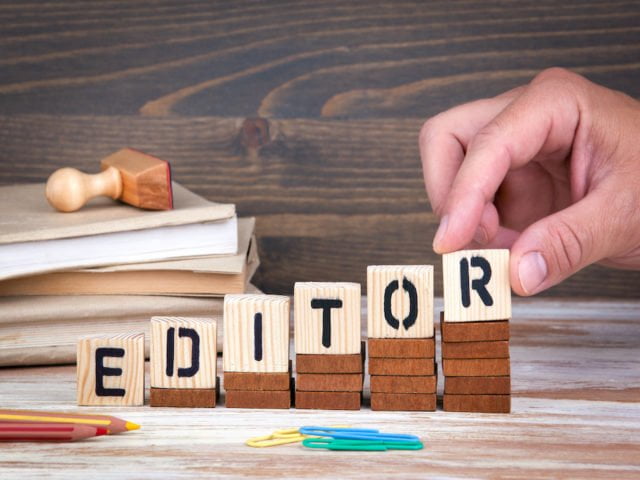What is copyediting, and why is it a vital part of the writing process?
Before I was a traditionally published writer, I thought that you had one editor. I imagined this editor would give me structural feedback, fix all of my spelling and grammar, and ta da! It would all be ready for the printers. I was wrong, very wrong. Editing isn’t one process; it has several levels to it. In traditional publishing you will receive a structural edit from the editor who has commissioned your work, often a line edit, to check every line to make sure that each sentence is as effective as possible, a copyedit, and finally a proofread.
But whether you are hoping to be traditionally published or are self-publishing your own work, a copyedit can mean the difference between a good book and a great one.
So what is a copyediting and why do you need it? Below you will find information on why a copyedit is so important, how a copyedit differs from proofreading, and exactly what a good copyedit involves.
What Is Copyediting?
Copyediting is a process of revision, which focuses on eliminating grammatical and factual errors, ensuring consistency and improved readability.
That sounds straight-forward, yet a copyeditor does more than fix your grammar and dodgy formatting. Yes, they can spot when you’ve written ‘weather’ instead of ‘whether’ and when you’ve accidentally popped an apostrophe for possession in the word its (we’ve all done it!), but they also do so much more.
A copyeditor will notice if you are repeating words. They will spot if in one paragraph you’ve spelled your drink as ‘whiskey’ and in the next chapter it’s ‘whisky’; they might even stop you from writing a sentence that is running on without any punctuation whatsoever so that if you tried to read it out loud your face would be turning blue and you would be on the verge of passing out (see what I did there?).
Consistency also plays a huge part in the copyediting process. Your copyeditor will scour your manuscript to spot if your character’s eye colours change from a glacial blue in the first chapter to a muddy brown in the thirtieth, and those all-important moments where you’ve slipped from first person to third person, then back again.
And then, of course, there’s the dreaded timeline. The word a lot of us flinch at the mere mention of! Yes, your copyeditor will be there, calendar in hand, to tell you that those dates don’t fit correctly with events you have described.
So, let’s look at the copyediting process in more detail.
What A Copyeditor Does
The role of a copyeditor will largely depend on the condition of the manuscript in front of them, where it will be published, and the time/budget available. Their job is to offer revisions of the following key elements:
- Align title order and apply consistency in fonts and headings sizes
- Check and amend spelling and grammar errors
- Check continuity of place/character names
- Check continuity of character and setting cosmetics
- Improve clarity of language, ensuring the narrative runs smoothly
- Ensure that the correct captions are with the appropriate photograph
- Confirm citations match the content of the reference section
- Highlight potential legal liability, with a view to keeping you and your manuscript safe from possible legal action against you
- Highlight overuse of jargon
- Suggest changes for repetition
- Raise discrepancies in the timeline
When you receive your copy edits back, for the most part, your copyeditor will correct your manuscript digitally with track changes on so you can see exactly where you have made (often laughable) mistakes; remember that character, Brian? Well, you have called him Brain for most of your manuscript, but look, your wonderful copyeditor has ironed out all those Brains for you. Phew!
There are times when your copyeditor will need your input if they are unsure of your meaning, or think rewording a sentence would help make your manuscript run smoothly. They will add a comment on your document to bring this to your attention.
It’s considered quite rare by today’s standards, but should they find themselves working on a paper copy you may find that a copyeditor will use copyediting symbols which a proof-reader may use. In this case, the hard copy would be passed to another editor before it comes to you. At this point some of you may be saying – hold on, I thought a copyeditor was a proofreader? Fear not, my friends, I shall explain all…
Difference Between Copyediting And Proofreading
Remember how I said at the beginning that there are several levels of editing? Well, proofreading is the last one. Once your manuscript has been copyedited, you will now have a revised version of your manuscript. You have agreed/declined their amendments (yes, you can disagree, it is still your book!) it is then time to have a proof-reader examine your work.
You may be thinking – why do I need a copyeditor if it then has to be proofread anyway?
As we’ve already discussed, a copyeditor’s job is to not only look at spelling and grammar but offer an in-depth scrutiny of your manuscript.
By the time a proof-reader receives a manuscript, it will be an almost finished piece of work; it will have been to typesetting and the pages in front of them (a PDF if it’s a digital copy) will look like the pages in your book.
The job of the proof-reader is to correct any errors that have fallen through the net and they will be focusing on the finished product that is about to go to print. A proof-reader will be ensuring that the house style of the publisher is met. For example, you may have written okay, but your publisher’s house style may be OK. They will look at your page numbers, ensure no pages are missing and even check for repetition of words that sit above each other – often referred to as stacking — in the text.
At the proofreading stage, there should be no major changes in the text, just the odd one-word correction or possibly a paragraph if it’s deemed necessary. If there are too many errors, a proof-reader may return the proof and request further copyediting.
In short, a copyedit will contain a vast number of revisions based on the quality of your writing, the content of your story, as well as the layout and any syntax errors.
A proof-reader’s corrections are often minimal as they are working on the final draft of your work.
They are there to put the icing on the cake, to straighten your tie, to make sure your knickers aren’t tucked into your dress before you leave the house.
Why Copyediting Is Important
Copyediting is an invaluable part of the publication process. Without it, you may be sending out a manuscript where your main character is called Brain not Brian, where your characters have the ability to change eye colour at any given time in your novel, and where a year in your work may actually be fourteen months long. You may think your manuscript is ready to be published without a copyeditor, but even the most established and experienced writers make mistakes.
Copyeditors are the quality gatekeepers of the publishing world and may well hold the keys to your success.
How Long Does Copyediting Take?
Writers by and large are an impatient bunch, so how long will you have to wait to have your work copyedited?
For a fairly clean manuscript by a professional author, a copy editor will read approximately 1500 words an hour.
For a less experienced writer on average it would take 1000-1250 words an hour.
If you are thinking of taking the plunge, all reputable copyediting services will be able to provide a quote and an expected delivery date.
Do I Need A Copyeditor?
Whether you are self-publishing or hoping to be traditionally published, copyediting is a vital part of the publishing process. Without it, the quality of your work may suffer and the wonderful story you are telling may be put aside in favour of the enigmatic blue-eyed Brian whose exciting story unfolds over the course of just one year… not a year and two months.
As my own work is currently off to be copyedited, I would like to thank copyeditors everywhere; you are my heroes, and Brian and I are forever in your debt. If your work would benefit from copy-editing, try our copy-editing service. Or, try our line-editing service.
Jericho Writers is a global membership group for writers, providing everything you need to get published. Keep up with our news, membership offers, and updates by signing up to our newsletter. For more writing articles, take a look at our blog page.











